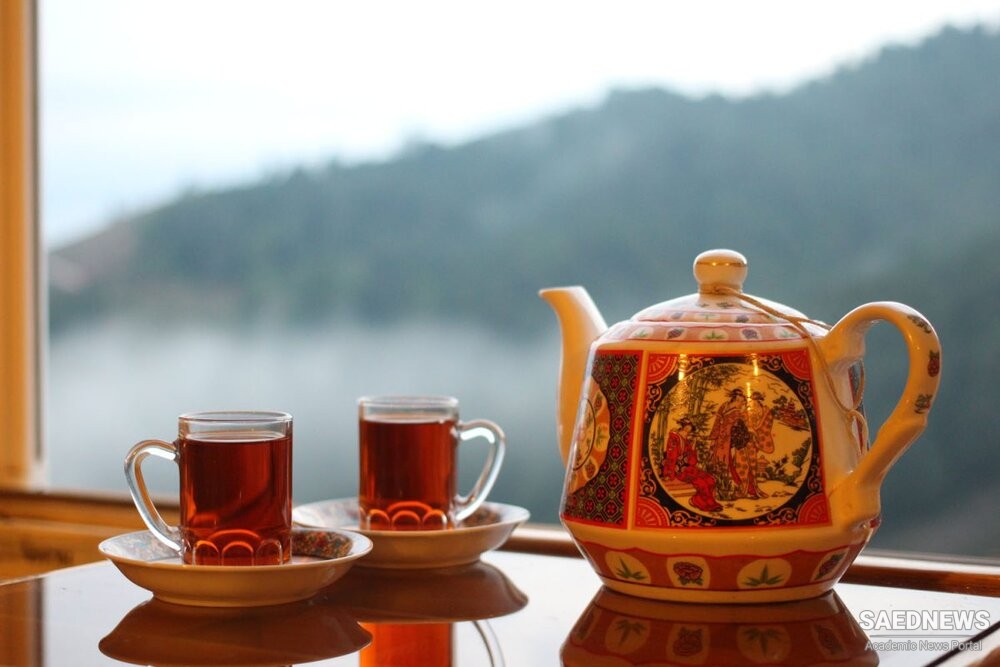Tea is produced from the young leaves and unopened leaf buds of the tea plant, Camellia sinesis. The plant is an evergreen shrub native to the hillsides of China, India, Ceylon (Sri Lanka), Malaysia and Indonesia. This native plant has been introduced to other countries with suitable growing conditions for tea. The climate should be relatively warm and the rainfall should be evenly distributed throughout the season. Tea is grown in both terraced hillsides and open fields. The tea is harvested by picking the bud and the two terminal leaves from each shoot. This is referred to as the ‘flush’. Since the difference between the three main types of tea – green, oolong and black – is in the processing, it is possible for these types of tea to come from the same bush. In processing the tea, green tea is unfermented, oolong tea is partially fermented and black tea is completely fermented before being fired or dried. After firing, some teas are scented with a variety of flowers, including jasmine, gardenia and rose petals. Tea is graded and sorted and differences in varieties and grading terminologies between countries and types of tea, as well as the location of tea production, account for the wide variance in the types and names of teas. For example, Ceylon teas grown in Sri Lanka are marketed as high-grown, medium-grown and low-grown; black Ceylon teas are graded as broken orange pekoe, broken pekoe, orange pekoe, pekoe, pekoe souchong, souchong, fannings and dust. After grading, tea is packed in aluminum-lined foil chests and sent to auctions located in important tea shipping areas, such as Calcutta and Cochin, in India, and also in Amsterdam, Hamburg and London. At these tea auctions tasters who represent buyers take samples and decide which teas should be purchased. In addition to the classification of teas by country, market name, type of tea and grade, teas are recognized by the individual tea garden where they were produced. This system of identifying tea reflects the many venues in which tea is grown and produced, resulting in a multitude of types of tea available to the consumer. There are over 4000 tea gardens in India and more than 2000 of such gardens in Sri Lanka. Pratt refers to there being well over 6000 tea estates outside China. As an agricultural product the quality of a particular type of tea from a specific tea garden can also vary from crop to crop and from year to year. Most tea available at the retail level is blended from different grades of tea to achieve a consistent taste. This is also the job of the tea taster. Shalleck refers to tea tasting as an art form, the domain of a few expert buyers, blenders and government officials: ‘Tea is judged by appearance and smell of the dried leaf, color and odor of a weak infusion, and the flavour characteristics of the drinking infusion.’ It is common for tea companies to have signature blends, for example Twining’s English Breakfast Blend or Bigelow’s Constant Comment. As many as twenty or thirty different teas can go into a popular blend of tea as Michael Smith notes: ‘The taster’s blend must match up with previous blends in order to achieve a continuity of flavor, almost in the same way that a blended wine must have no recognizable difference from its predecessor.’


 The Tea Culture and Unknown Potentiality of Culinary Tourism in Asia
The Tea Culture and Unknown Potentiality of Culinary Tourism in Asia














































